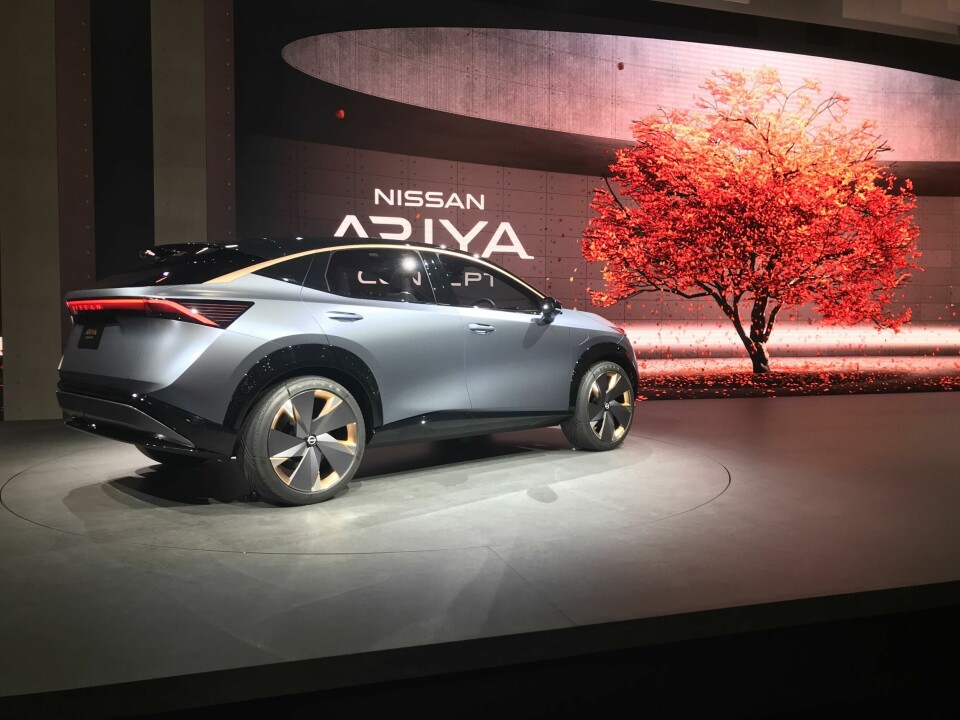
Tokyo 2019: Nissan’s bag-toting concepts
With the most dramatic show stand of this year’s Tokyo show, Nissan drew us in to their electric future
Everyone knew about the IMk concept Nissan announced it was showing at Tokyo this year, and the released images promised a cute, luxury kei-car with a rich copper-encased exterior. What was kept a secret was the Ariya, which was launched on the same stage, as part of the double act. Sitting between them was a digital tree with autumn leaves falling and drifting in the eddies of a virtual wind, which visually and philosophically connected the two concepts.
The Ariya concept is plainly a much more globally appealing car – and something closer to production, as Satoru Tai confirmed to CDN – while the IMk is a car tailored for Japan. But the connecting element is Nissan’s new phrase to express the direction they are taking in an electrified and (in future) autonomous age – Timeless Japanese Futurism. This is also what the tree represented; the sophisticated use of digital technology and presentation, combined with an appreciation of the way Japanese culture is irrevocably intertwined with the natural world.
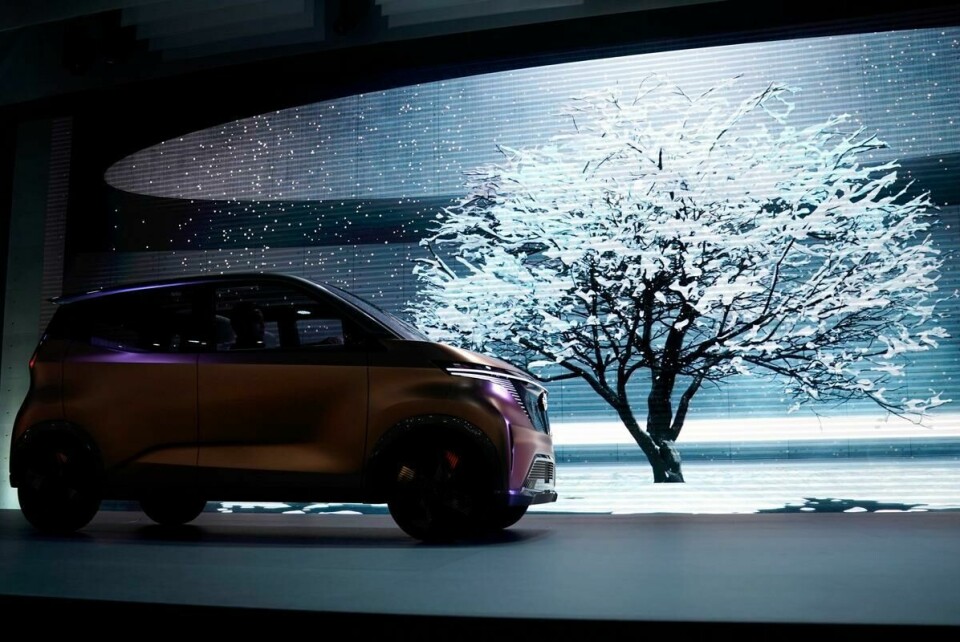
The tree was a powerful visual tool to communicate the important elements of Nissan’s new EV design language. Tai told CDN, “because of too much rain, because of earthquakes, we [Japan] learned that nothing lasts forever and that as humans we are part of nature, the same as the trees, the mountains, the rivers, we live together, so every innovation Japanese people made is related to that type of thinking… we want to respect that, we want to understand it. Now it is the time to see our Japanese past. It is not just a trend, there is some kind of truth there in the structures, the patterns.”
The journey into Japan’s creative and spiritual past we have seen happening at Nissan since Albaisa took the reins back in 2017 seems to be coming to fruition.
IMk

Tai told CDN that the interior of the concept is similar to a traditional Japanese room, the same section from front to rear, with lots of layers of wood, flat, simple, yet somewhere that you can be relaxed. In a quirky show-car touch, the design teams created a bespoke bag for each car to express their idea of who could be driving the vehicles, Nicole Fonesca, senior colour manager Nissan Global told CDN.
“Ariya was done more for a man and IMk was for a female and we thought that they were a couple living in Tokyo. We really wanted them to kind of own the city and feel really confident. Because kei cars really aren’t maybe so chic for Ginza or Tokyo, we wanted this one to be very chic and modern, very open and airy.” The handbag and the man-bag each use the same colour and interior materials as their concepts.
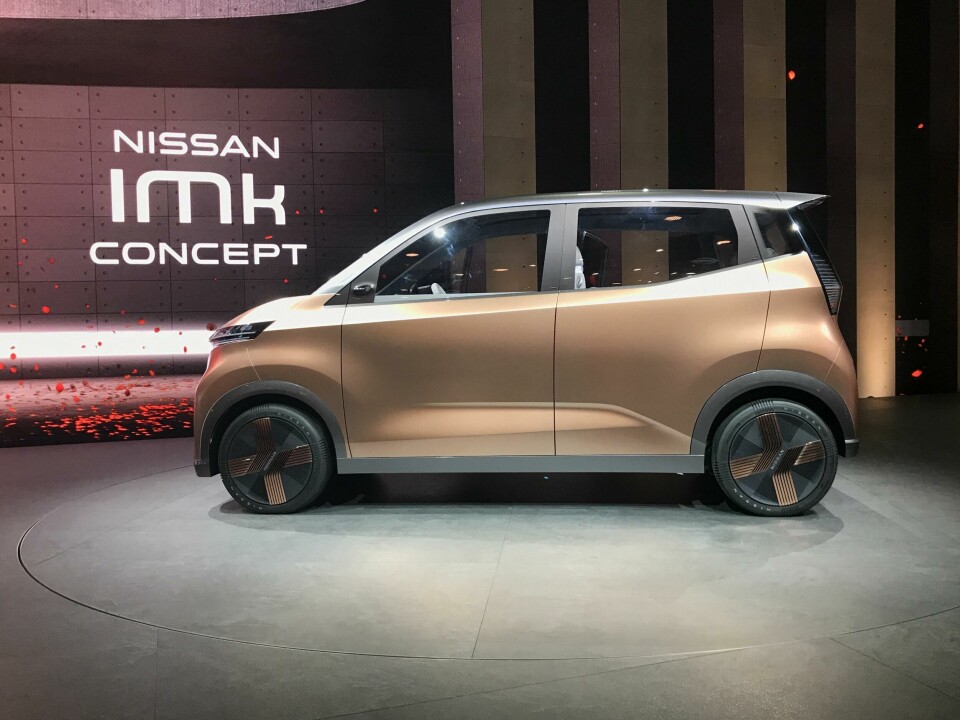
The copper body of the IMk references traditional Japanese metalworking but was chosen, according to Fonseca, because the team again wanted to convey a chic, modern feel. “That is why we decided to do the body in copper – not in high gloss, because it has some really clean lines – and we wanted the really dramatic flip-flop so that you can see the highlight and the lowlight of the body,” she continued. The copper was applied in many layers, not unlike traditional Japanese lacquering techniques for earthenware. Fonseca revealed that they painted the car in a silver base then they put the ‘liquid copper’ over the top. “That is what gives the depth, and why you see so much high- and lowlight in the paint.”
There is a contrasting roof, and within the grey is blue glass which sparkles under the lights [impossible to see in the photos, sadly], “So it is really pretty, kind of like a diamond, a gem sitting up on stage,” Fonseca said.
IMk concept gallery
Inside, a warm deep-pile copper-coloured carpet connects to the exterior, with the rest of the interior (except the base of the doors) in a light grey woven material. “The IMk is designed to be a lightweight car, so the team wanted it to feel lightweight and cleanable but functional too,” said Fonseca.
Really noteworthy is the use of a prism to function as the car’s screen and user interface. The intention was to have 3D holographic images projected within it. This prism is a really interesting solution to a problem no one realised they had. The prism is transparent “so you feel this really nice flow of horizontal movement and the big screen does not block any of the lines in the car, so it feels like this continuous beautiful line. It is super-cool.” It really is and we can’t wait to see this idea develop further.
Ariya
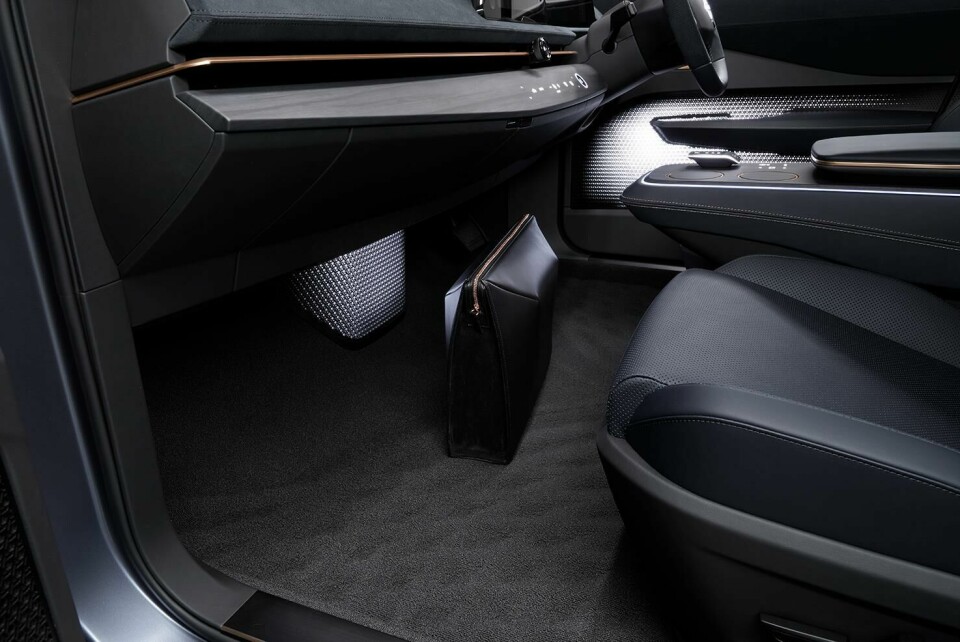
Designers usually think in terms of top surface, side surface and bottom surface, Satoru Tai told CDN. “That’s the kind of traditional recipe for automotive. But this one’s bodyside is like a wave, like the mountains or the sand on a beach, that kind of very natural feeling which is Timeless Japanese Futurism – nature, a more relaxing taste. But it shouldn’t be boring, shouldn’t be too quiet; it should be mixed with dynamism.”
And dynamic the Ariya is. Much closer to production but nevertheless another iteration of the IMx concept we saw in 2017 at the Tokyo show, the Ariya is Nissan’s articulation of what we can expect to see from them in EVs.
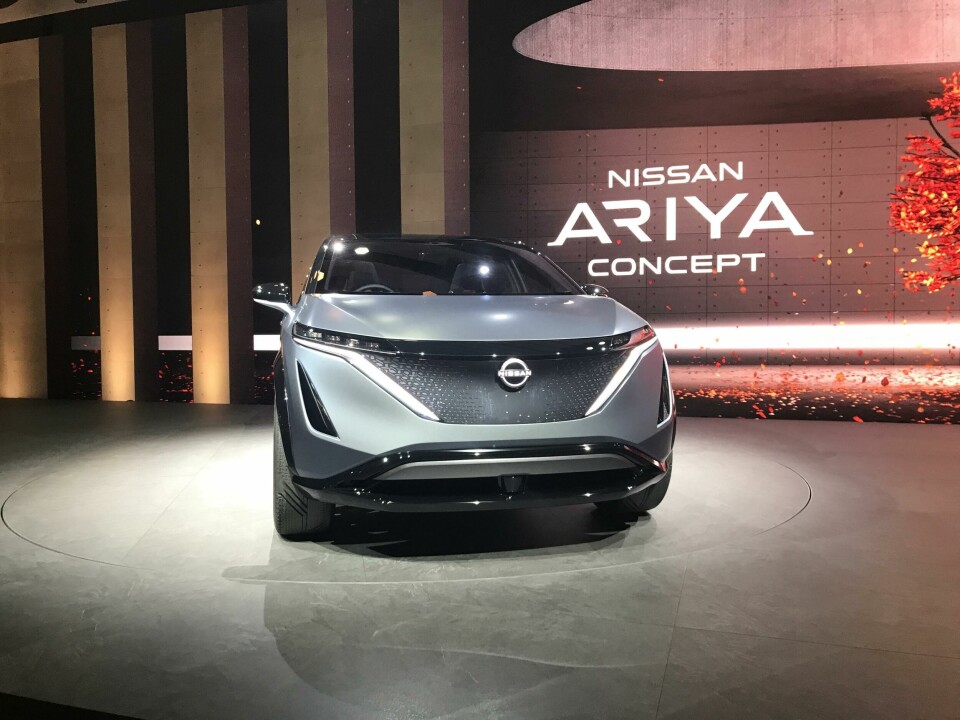
At the front of Ariya there is a profoundly different face to any production Nissan. Tai confirms that, with the exception of trucks, the new electric design language calls for a lighter touch, with absolutely no chrome. “The thick chrome grille or heavy looking front is a bit too much for EVs, the use of light is a bit more quiet and smooth. That is our design intention.” The ‘shield’, which houses sensors and other tech, still contains a lit version of the V-motion signature, but other, more complex elements are creeping in.
A geometric kumiko pattern seen in the ‘shield’ gives it a three-dimensional feeling lacking from other ‘electric grilles’ we have seen. The pattern is also echoed in other areas of the car – in the lighting signature, in the interior lighting, the door, and the engraved pattern on the pedals. The rear light blade looks bang on trend, making us think this vehicle will be for sale relatively quickly. Once more on this concept we see the use of a warm copper, but as an accent colour this time, both within the interior elements and on the exterior, sweeping along the roofline in side profile. A detail that may form part of the new EV language for production Nissans.
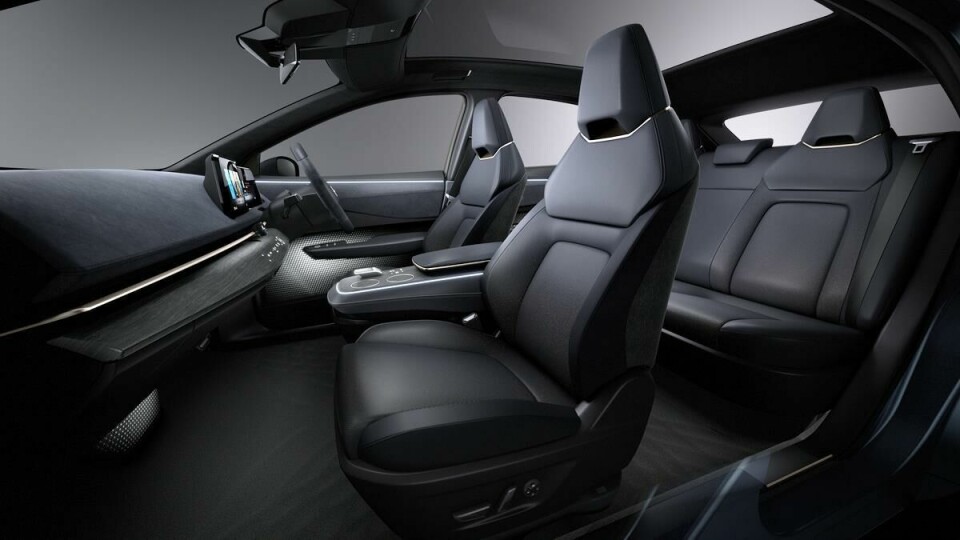
Similar to the other concepts we have seen from Nissan in the last two years, the interior makes the most of a layout dominated by the lack of an internal combustion engine and a flat floor. There’s a minimalist dash layout, with some haptic controls embedded within a sweep of wood along the IP. Thin-frame seats enhance the feeling of generous interior space. There is certainly a more masculine choice of materials in this concept, which uses stitched leather, muted greys, dark sweeps of natural-grain wood, and keyline copper accents, as also expressed by the bag that accompanies the car.
Both concepts told us something interesting about what Nissan’s designers have been up to, and the use of clever and beautiful digital art on the stand to connect the themes and concepts on display was very powerful. The IMk concept in particular reminded us that with the global design team created under Albaisa and Tai, concept cars won’t get boring at Nissan anytime soon.
Nissan Ariya concept

















